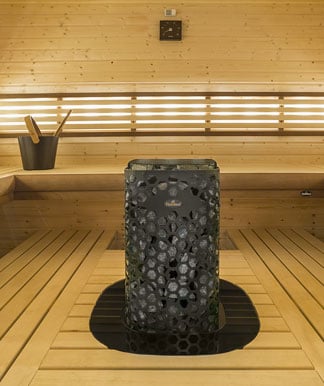Traditional Sauna Fundamentals Explained
Traditional Sauna Fundamentals Explained
Blog Article
Traditional Sauna - The Facts
Table of Contents3 Simple Techniques For Traditional SaunaThe Main Principles Of Traditional Sauna Get This Report on Traditional SaunaThe 5-Second Trick For Traditional SaunaTraditional Sauna - The Facts
A lot of the weight lost in a sauna is water loss and is re-gained upon rehydrating. Nonetheless, without an uncertainty sauna can be a fundamental part of a healthy and balanced fat burning program. To check out the distinctions between standard and IR saunas, I will certainly divide these right into verifiable, theoretical, and fabricated distinctions.Thus, the most popular point in the saunawhich is at the ceiling straight above the sauna heateris typically in between 185 and 190 F. Claims that a standard sauna goes beyond 200 F is just not real and not appropriate for electrical saunas sold in the US. The temperature level for a far-infrared sauna is usually set between 120 and 140 F; nevertheless, unlike the typical sauna, the goal in and IR area is not to attain a high temperature.

When a typical sauna has actually been correctly heated up, the sauna walls are warm, the air temperature has actually attained set temperature level and the rocks are very warmed. As an intriguing side note, the warmed wall surfaces and the rocks are releasing far-infrared heat, integrated with the warmed air, to create an "covering heat".
Some Ideas on Traditional Sauna You Should Know
When the high temperature level is accomplished, the aspects cycle on and off to maintain the heat. Most standard sauna users delight in putting water over the rocks to develop heavy steam to elevate sauna moisture levels. The benefits of pouring water over the rocks consist of: making the area extra comfy, moistening the nasal passages, and permitting the use of aromatherapy by mixing crucial oils with the water.

When the power gets in the body, it triggers the body temperature level to raise and inevitably results in sweat. In an infrared sauna it is essential for the emitters/heaters to continue to be on nearly continuously. Because there is no mass site of rocks to retain heat, the sauna will certainly cool if the emitters shut down.
How Traditional Sauna can Save You Time, Stress, and Money.
As mentioned over, the sauna bather in an infrared room desires to place himself in front of operating emitters to get optimal take advantage of the warm. The home heating time for the two areas can be extremely various, relying on exactly how the spaces are used. For a conventional sauna, a bather must permit 30-40 minutes for the space to attain a preferred temperature and to effectively pre-heat the rocks.

A well constructed sauna will commonly accomplish a temperature level of 150-160 F in about 30-40 mins. For hotter temperature levels, the room may need to warm for a longer duration.
To some, 15 mins was "thrown away" while the infrared energy heated the wood panels rather than heating up a body, while others locate a pre-heated area to be much more comfy and believe an elevated starting temperature is required to start sweating. The length of recommended use for each and every space is about the very same (10-15 mins try this per session); however, because of the lower air temperature levels and the capability to really feel the effects of infrared heat quicker than a conventional sauna, it is not unusual for a person to invest an overall of 20-30 minutes in an infrared sauna.
4 Simple Techniques For Traditional Sauna

The ordinary cost per kWH of power in the U.S. is roughly $0.11, so a 4.5 kW heater will certainly set you back approximately $.50 to compete one hour, if the heater runs continually for one hour. Normally a sauna heating unit will certainly run for 75% of the first hour and 50% of subsequent hours on since the components cycle once the established temperature level is accomplished.
A 2 person far-infrared area is typically literally smaller than a conventional sauna, commonly about 4' x 4' or smaller sized. The IR furnace is normally 1.5-1.7 kW utilizing a 120 volt 15 amp plug-in service. Since the space can be utilized sooner than a sauna room, we will think the area is utilized for to of an hour including warm up time.
There is a seldom reviewed distinction in the social experience in between the two rooms. While our society has actually shed several of the social advantage of the traditional sauna experience, it can be really my website socially fulfilling (Traditional Sauna). From family time in the sauna, to heart-felt conversations with loved ones, to sauna partiesthe typical sauna experience can lead to intimate interacting socially
The 6-Minute Rule for Traditional Sauna
A lot of higher end infrared rooms include tinted light therapy, noise systems and full-glass fronts.
Report this page